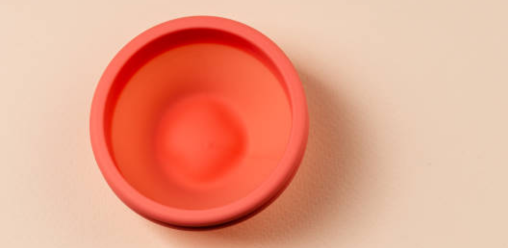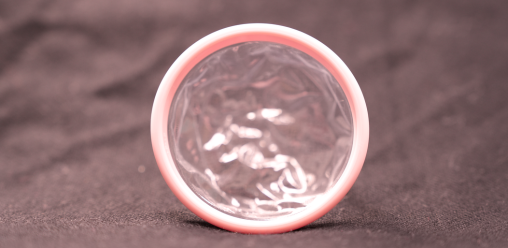Healthy New Jersey
Menstrual discs
Key facts about menstrual discs
- Menstrual discs are positioned between the space behind your cervix and your pubic bone.
- Menstrual discs are typically made of medical-grade, flexible materials such as silicone or polyethylene.
- They can be worn for up to 12 hours, providing longer protection compared to tampons or pads.
- Menstrual discs are known for their ability to hold a significant amount of menstrual fluid, equivalent to 2-3 tampons' worth.
The menstrual disc is a product that collects menstrual fluid in a shallow disc. Inserted in the space behind your cervix and your pubic bone, menstrual discs can be worn for up to 12 hours. Discs are typically made of soft, flexible materials like medical-grade silicone, and reusable and disposable options are available.

Reusable menstrual discs
Reusable menstrual discs offer a sustainable and comfortable alternative to traditional period products. Made from medical-grade silicone, they are worn internally to collect menstrual fluids, providing leak-free protection for up to 12 hours. Menstrual discs are an eco-friendly period product.

Disposable menstrual discs
Disposable menstrual discs provide convenient and mess-free period protection. These soft, flexible discs are worn internally to capture menstrual fluid and can be easily discarded after use. Offering up to 12 hours of leak-free protection, they provide a discreet and hassle-free solution for your period needs.
Benefits of menstrual discs
Capacity and comfort
Menstrual discs can hold more fluid than tampons and pads, providing longer wear time. They are also generally comfortable to wear, with no sensation of fullness.
Mess-free removal
Menstrual discs are typically removed by hooking a finger under the rim and pulling it out horizontally, reducing the potential for spillage.
Compatibility
Menstrual discs can be used during sexual intercourse, as they sit higher in the vaginal canal and are less likely to interfere.
Considerations for menstrual discs
Insertion technique
Practice may be required to achieve a secure fit. Proper insertion involves folding and positioning the disc at the cervix.
Menstrual discs may not work well for everyone due to variations in vaginal shape, cervix position, or personal comfort preferences.
Menstrual disc hygiene and maintenance
Maintaining proper hygiene and regular maintenance of menstrual discs is important for safe and effective use. Here's an overview of menstrual disc hygiene and maintenance:
Cleaning Before First Use
Before using a new menstrual disc for the first time, it is recommended to sterilize it by boiling it in water for a few minutes. This helps ensure cleanliness and removes any manufacturing residues.
Cleaning Between Uses
After removing the menstrual disc, empty the collected menstrual fluid into the toilet or sink. Rinse the disc thoroughly with water to remove any remaining blood. Some users prefer to use mild, unscented soap to clean the disc. Avoid using harsh soaps, fragrances, or douches, as they may disrupt the natural pH balance or cause irritation.
Menstrual Disc Cleansers
There are specialized menstrual cup or disc cleansers available on the market. These cleansers are specifically formulated for menstrual products and can be used to clean your menstrual disc. Follow the instructions provided by the manufacturer when using these cleansers.
Sterilization
It is recommended to sterilize the menstrual disc at the beginning and end of each menstrual cycle. Boiling the disc in water for a few minutes effectively sterilizes it. Use a clean pot designated for this purpose and ensure the disc is fully submerged in the boiling water. Be cautious not to leave the disc in boiling water for too long, as it may damage the material.
Storage
After cleaning and sterilizing, make sure the menstrual disc is completely dry before storing it. It is important to store the disc in a clean and breathable container or pouch to protect it from dust and contamination. Avoid storing the disc in an airtight container, as it needs to remain dry and allow air circulation.
Replacement
Menstrual discs wear out over time. Inspect the disc regularly for tears, cracks, or changes in texture, and replace the disc immediately if you notice any damage. It is advisable to replace the disc as recommended by the manufacturer, which is usually after a few years of regular use.
Personal Hygiene
Prior to inserting or removing the menstrual disc, always wash your hands thoroughly with soap and warm water to maintain good personal hygiene. This helps reduce the risk of introducing bacteria into the vaginal area.
Menstrual Disc Sharing
It is not recommended to share menstrual discs with others due to hygiene reasons and the risk of transmitting infections. Each individual should have their own personal menstrual disc.
 Official Site of The State of New Jersey
Official Site of The State of New Jersey